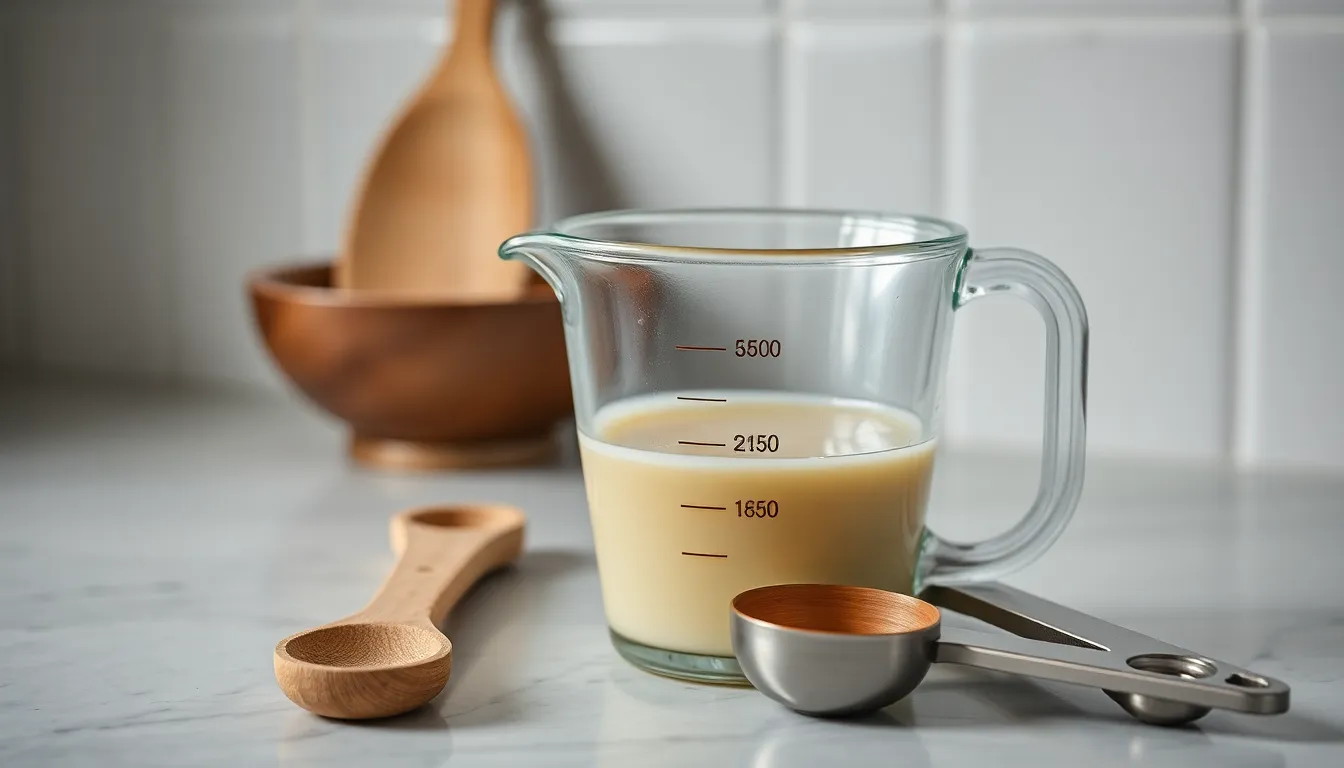Ever found yourself in the middle of a recipe, staring blankly at the measurement conversions? You’re not alone! The great cup-to-milliliter mystery has baffled many a home chef. With cups being the beloved measurement of comfort food and milliliters reigning supreme in precision, knowing how many ml are in a cup can save the day—and your dinner.
Imagine whipping up that perfect cake only to discover you’ve used a cup of flour instead of a cup of sugar. Yikes! Understanding this simple conversion can be the difference between culinary triumph and a kitchen disaster. So let’s dive into the world of cup measurements and demystify how many milliliters are in a cup, ensuring your cooking adventures are both delicious and disaster-free.
Understanding Measurements
Culinary measurements can be perplexing, especially when converting between cups and milliliters. One cup equals 236.6 milliliters, which provides a clear reference for cooking and baking. Knowing this conversion helps prevent common cooking errors. For example, using an incorrect amount of liquid can alter the texture of baked goods significantly.
Milliliters are often used in recipes outside the United States. This measurement system is common in many countries, making familiarity with it essential for home cooks. Heaping tablespoons or scant cups can lead to discrepancies, impacting the final dish’s quality.
Using precise measurements enhances the cooking experience. Chefs recommend maintaining a digital scale for accuracy. Doing so simplifies the process of converting between milliliters and cups. Certain recipes may specify volume in milliliters instead of cups, making this understanding even more critical.
When converting from milliliters back to cups, keep in mind that 1 milliliter equals approximately 0.00422675 cups. This conversion rate facilitates accurate cooking and helps maintain culinary integrity.
Home cooks benefit from additional resources. Online conversion calculators and measurement charts offer quick references for those unsure about conversions. Having easy access to these tools can make cooking more enjoyable and efficient. Following precise measurements ensures that recipes turn out as intended, encouraging confidence in the kitchen.
Converting Cups to Milliliters

Understanding the conversion from cups to milliliters enhances cooking accuracy. Familiarity with standard measurements helps avoid errors in recipes.
Standard Cup Measurements
A standard cup measurement in the U.S. equals 236.6 milliliters. Precision in measuring ingredients ensures optimal cooking results. For recipes, this measurement plays a crucial role. Knowing this helps differentiate between ingredients, ensuring the right amounts. Use this equivalence for liquid and dry ingredients to maintain consistency and accuracy. Multiple recipes often rely on this standard measurement for success.
Different Types of Cups
Various types of cups exist for measuring, including dry cups and liquid measuring cups. Dry cups typically hold 240 milliliters, while liquid measuring cups have slightly more precision with spouts for pouring. Each type serves distinct purposes in the kitchen. Understanding these differences minimizes potential measuring confusion. Some recipes specify the type of cup needed, impacting ingredient volume. Knowledge of each type fosters confidence when preparing meals and baking.
Practical Applications
Understanding the conversion between cups and milliliters proves valuable in various culinary situations.
Cooking and Baking
Precision plays a crucial role in cooking and baking. Using 236.6 milliliters for each cup ensures accuracy when following recipes. For example, a cake recipe requiring two cups of flour translates to 473.2 milliliters. A digital scale offers the best accuracy for ingredient measurement. Liquid and dry ingredients require different measuring vessels, and knowing the capacity of each type helps maintain recipe integrity. Recipes originating from different countries often use milliliters instead of cups. Home cooks should familiarize themselves with these measurements to recover from potential mishaps. Mastering these conversions supports greater confidence in the kitchen.
Liquid Measurements in Beverages
Beverages often rely on milliliters for precise measurements. Cocktails call for specific amounts of spirits, often calculated in milliliters rather than cups. A standard cocktail recipe might require 60 milliliters of gin, equating to roughly a quarter cup. Understanding these conversions aids in mixing drinks accurately. In addition, knowing how many milliliters are in a cup assists with smoothly following beverage recipes from various cultures. Accurate liquid measurements influence flavor balance and drink consistency. Familiarity with this measurement promotes better beverage preparation, enhancing enjoyment and satisfaction.
Tools for Conversion
Various tools aid in converting cups to milliliters effectively. Precision in measurement enables better culinary outcomes.
Measuring Cups and Tools
Different measuring cups serve distinct purposes. Dry measuring cups, commonly used for ingredients like flour and sugar, measure volume accurately for solids. Liquid measuring cups hold wet ingredients, with spouts for pouring ease. Many kitchen scales measure in grams and milliliters, enhancing precision in recipes requiring specific liquid amounts. Quality kitchen tools ensure consistent results, particularly in baking where accuracy plays a crucial role.
Conversion Charts and Resources
Conversion charts provide quick visual references for those needing immediate assistance. Online calculators enable rapid conversions, making it easy to switch between cups and milliliters without hassle. Numerous cooking websites feature printable charts for reference during cooking sessions. Mobile apps also simplify conversion tasks, ensuring accuracy even when away from the kitchen. Familiarity with these resources increases confidence and improves efficiency when following recipes from different regions.
Mastering the conversion between cups and milliliters is essential for any home cook. Knowing that one cup equals 236.6 milliliters can prevent common cooking errors and enhance the overall culinary experience. This understanding not only applies to baking and cooking but also extends to beverage preparation where precision is key.
Utilizing the right measuring tools and resources can significantly improve accuracy in the kitchen. Whether it’s using digital scales or online conversion calculators, these methods foster confidence and ensure recipes turn out as intended. Embracing these measurements ultimately leads to better cooking outcomes and a more enjoyable time in the kitchen.
